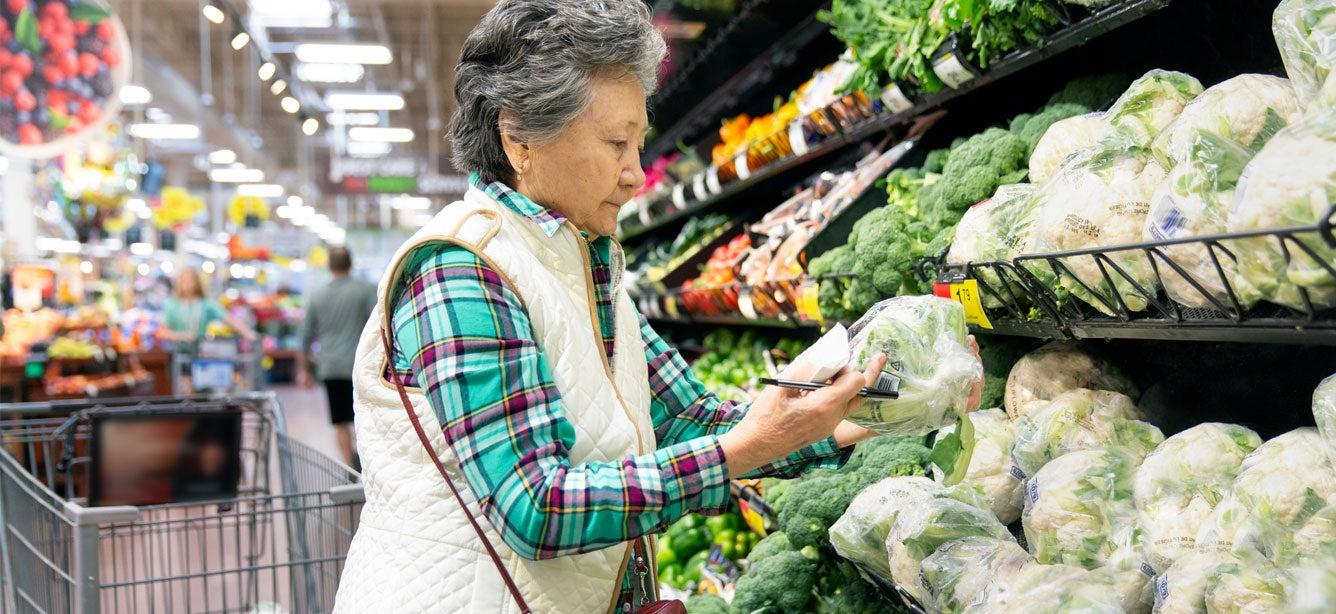
Related Topics
Disability can touch anyone’s life, no matter their age or background—and it can have a big impact on both health and finances. According to the Centers for Disease Control and Prevention (CDC), about 1 in 4 American adults live with a disability, and they’re more likely to experience conditions like obesity, diabetes, or heart disease.1 They’re also more likely to face challenges putting enough nutritious food on the table.2
If you have a disability, or if someone else in your household does, you may have firsthand experience with some of these challenges. You may also be wondering, “Do SSDI recipients get food stamps?” Quite often, the answer is yes.
What are the guidelines for SNAP?
Each year, the Supplemental Nutrition Assistance Program (SNAP) helps millions of families and adults across the U.S. buy the nutritious food they need to stay healthy on a budget. To be eligible and apply for SNAP benefits, you must meet specific resource and income limits that are set and managed by the state in which you live.
Most SNAP guidelines apply to all households. But the program also includes special eligibility rules for people with disabilities, regardless of age.
This means it’s possible to qualify for and receive SNAP benefits while you also collect Social Security Disability Insurance (SSDI) and/or Supplemental Security Income (SSI) payments.
How does SNAP define a person with a disability?
Under SNAP rules, you are considered to have a disability if you meet any one of the following criteria:
- You receive federal disability or blindness payments under the Social Security Act, including Supplemental Security Income (SSI) or Social Security disability or blindness payments.
- You receive state disability or blindness payments based on SSI rules.
- You receive a disability retirement benefit from a governmental agency because of a permanent disability.
- You receive an annuity under the Railroad Retirement Act and are eligible for Medicare or are considered disabled under SSI.
- You are a veteran who has a total disability, is permanently homebound, or needs regular aid and attendance.
- You are the surviving spouse or child of a veteran who is receiving VA benefits and is considered to have a permanent disability.
What are the SNAP income limits for people with disabilities in 2026?
If you have a disability and want to apply for SNAP, your household generally must meet the following two conditions:
- Your net monthly income must be equal to or below 100% of the federal poverty line.
- Your countable assets must amount to $4,500 or less.
If you live alone, this means your net income monthly income can be $1,305 or less. For a two-person household, it’s $1,763.
But—and this is important—if you live in a household where every member receives SSI benefits, you may “categorically” qualify for SNAP without having to meet the net income test.
Does SNAP count SSDI as income?
Yes. When you apply for SNAP, all your earned income (such as employment wages) and your unearned income (including SSDI benefits) counts.
But don’t let that discourage you. Under the SNAP excess medical expense deduction provision, you may use unreimbursed out-of-pocket medical expenses to help you pass the net income test and qualify for SNAP assistance. Depending on your situation, this deduction can be significant. It may even lead to a higher SNAP benefit.
Why should I get SNAP if I’m on disability?
A healthy diet can help combat obesity, diabetes, heart disease, and other chronic conditions that disproportionately affect people living with disabilities. But it can be hard to afford nutritious food if your employment is limited or you’re on a fixed income. SNAP can help you increase your purchasing power.
Your SNAP benefits can be used for fresh fruits and vegetables, meat and fish, dairy products, non-alcoholic beverages, and other qualifying purchases at participating retailers including supermarkets, convenience stores, and even some farmers’ markets.
Consider that 10% of SNAP recipients were non-elderly people with a disability in fiscal year 2023. And the average monthly SNAP benefit for a single, non-elderly person with a disability was $214.3 With SNAP, you can take advantage of additional financial assistance that can make a real difference for your health and budget—just like Mr. and Mrs. White in Connecticut do.
“I’m in a wheelchair and cannot cook,” says Mrs. White, 74. “When my husband became seriously ill, I didn’t know how we would afford to put food on the table. With help from our area Agency on Aging, I was able to apply and qualify for SNAP assistance and the extra money that goes on our benefits card each month makes a real difference.”
I’m ready. How do I apply for SNAP?
Each state designs its own SNAP application process, so your first step is to check with your local SNAP office. While some states provide online SNAP applications, not all do; you may have to apply by regular mail or over the phone. And before you begin filling out the forms, you’ll need to have information about your annual net income, household size, and “countable assets” close at hand.
This may sound overwhelming, but it doesn’t have to be. If you’d like assistance navigating the process, we’re here to help. Visit BenefitsCheckUp.org for all the information you need.
Sources
1. Centers for Disease Control and Prevention. Disability Impacts All of Us Infographic. Found on the internet at https://www.cdc.gov/disability-and-health/articles-documents/disability-impacts-all-of-us-infographic.html
2. The Center for Law and Social Policy. SNAP Time Limits Can Reduce Access for Disabled People. Found on the internet at https://www.clasp.org/blog/snap-time-limits-can-reduce-access-for-disabled-people/
3. USDA. Characteristics of Supplemental Nutrition Assistance Program Households: Fiscal Year 2023. Found on the internet at https://fns-prod.azureedge.us/sites/default/files/resource-files/snap-FY23-Characteristics-Report.pdf




